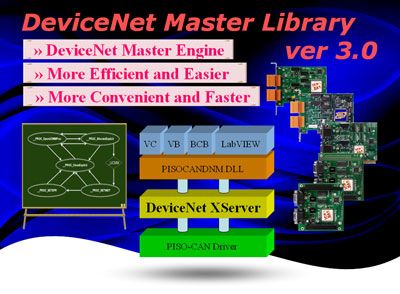
ICP DAS DeviceNet Master Library (DLL functions) for Windows 98/ME/NT/2000/XP provides users to establish DeviceNet network rapidly by Master/Slave connection model. The users can develop various DeviceNet application softwares via this library. The DeviceNet master library is for PCI CAN interface card, which are PISO-CAN200/400, PISO-CAN200/400U, PCM-CAN200/200P and PISO-CAN200E. Applying the library, users don’t need to take care of the detail of the DeviceNet protocol.
The library implements the DeviceNet protocol automatically. It can reduce the complexity of user's DeviceNet master software. The library mainly implements the DeviceNet protocol with the PISO-CAN 200/400, PISO-CAN 200U/400U, PCM-CAN200/200P or PISO-CAN200E. It can help users to establish the connection with DeviceNet slave devices easily. The general application architecture is demonstrated as following figure.
The library only provides the DeviceNet Master mechanism to communicate with slave devices by the Predefined Master/Slave Connection Set, which can be clarify as two forms: One is the Explicit Message and others are I/O Messages.
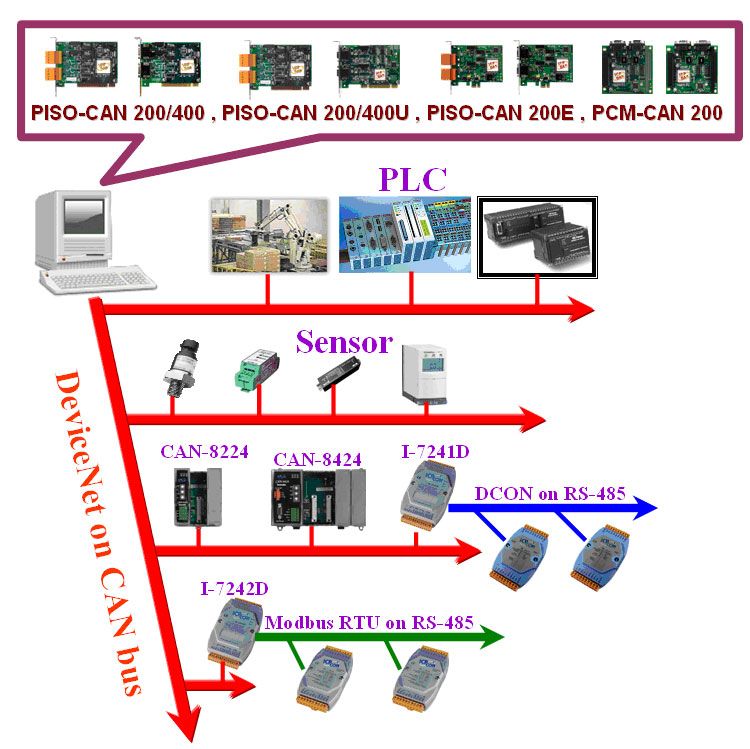
Applications
- Industrial Machinery
- Building Automation
- Medical
- Maritime
- Restaurant Appliances
- Laboratory Equipment & Research

Library Layer
The user’s DeviceNet application programs can be developed by the following designated tools: VB, Delphi and Borland C++ Builder…etc. In these tools, the application program can call the PISOCANDNM.DLL driver to implement DeviceNet network application.
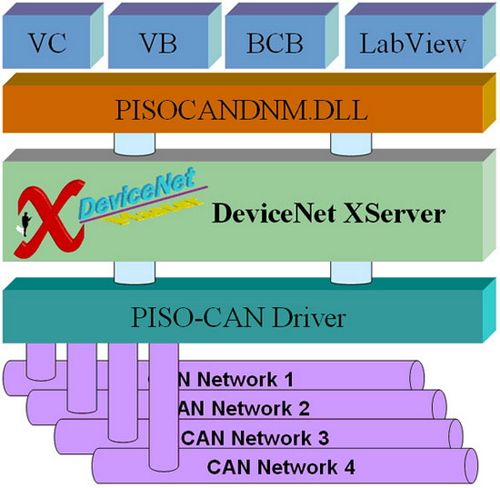
Library Features
- Driver supported for Windows 98/ME/NT/2000/XP
- Programmable Master MAC ID.
- Programmable transfer-rate 125K, 250K, 500K
- Each port support maximum nodes up to 64
- Support Group 2 Only Client functions
- Support UCMM functions
- The maximum Fragment number is (Input/Output) up to 64
- Support I/O Operation Mode: Poll, Bit-Strobe and Change Of State/Cyclic
- Support Auto-Scan slave device function
- Support on-line adding and removing devices
- Support Auto-Reconnect when the connection is broken
Note that before communicating I/O data with DeviceNet slave devices, the Master device must connect to slave devices by explicit message connection to define the connection object. Here, we only provide one explicit message connection and four I/O connections as depicted in the figure as shown below.
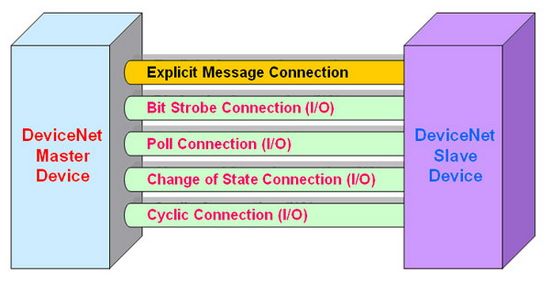
The DeviceNet communication protocol is based on the concept of connections method. Master should create connections with slave devices based on the command of exchanging information and I/O data. To establish master control mechanism, there are only four main steps to be followed. The figure as shown below demonstrates the basic process for the DeviceNet master communication. The every step function is described in below:

- Add device into network
You should provide the slave device’s MAC ID to add into network. - Configure connection
You can check the slave device’s I/O connection type and the I/O data length. When configuring the I/O connection, you should provide these parameters. - Establish connection
After configuring connections, users can start communicating with slave devices. - Access I/O data
After communicating with slave devices, you can access the I/O data with corresponding read/write function.
After establishing the explicit connection, the connection path is then used to exchange the general information from one node to the others. And then users can create the I/O connections in the next step. Once I/O connections have been created, I/O data may be exchanged among devices in the DeviceNet network according to master device demand. Therefore, the master device can access I/O data of the slave devices by one of the four I/O connection methods. The library is not only easy to use but also providing a lot of the DeviceNet Master functions to retrieve and deliver the slave’s I/O data.
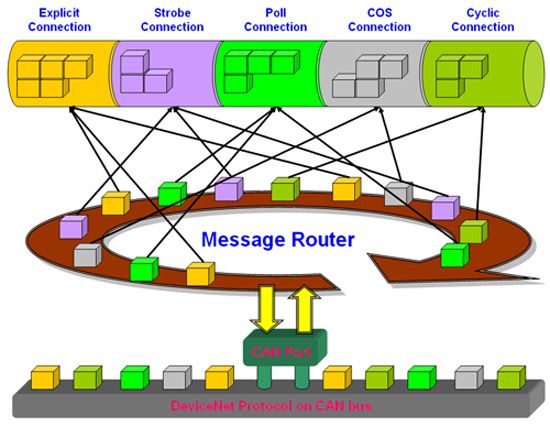
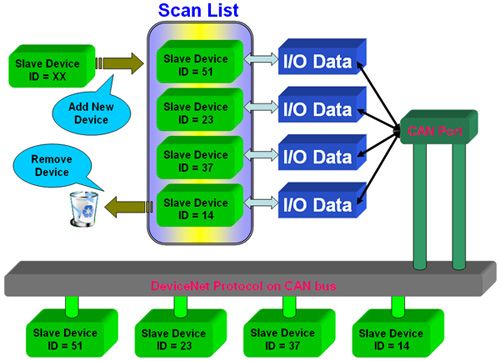
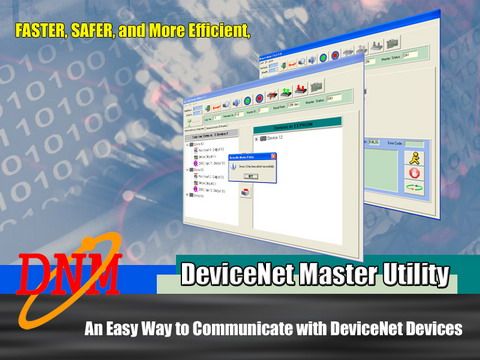
ICP DAS provides a free DeviceNet master software kit which is DeviceNet Master Utility. DeviceNet Master Utility is a DeviceNet application software which was developed by the DeviceNet master library. The utility helps users to familiar with the DeviceNet master library.
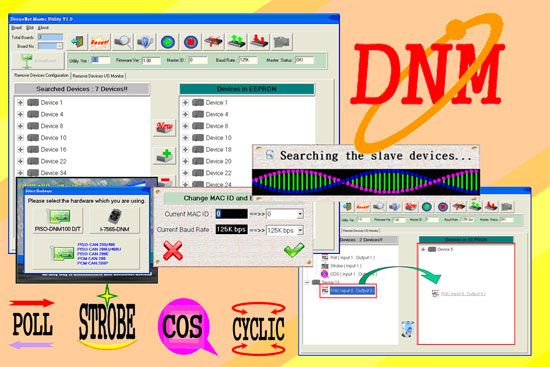

|
|
|
| Model Name | Description |
|---|---|
| PCM-CAN200-D |
1-Port Isolated Protection CAN PCI-104 Module with 9-pin F/M D-sub connector |
| PCM-CAN200P-D |
1-Port Isolated Protection CAN PCI-104 Module with 9-pin F/M D-sub connector |
| PEX-CAN200i-D |
2-port Isolated Protection CAN PCI Express Card with 9-pin D-sub connector |
| PEX-CAN200i-T |
2-port Isolated Protection CAN PCI Express Card with 5-pin Screw Terminal Connector |
| PISO-CAN200U-D |
2-port Isolated Protection CAN Universal PCI Card with 9-pin D-sub connector |
| PISO-CAN200U-T |
2-port Isolated Protection CAN Universal PCI Card with 5-pin Screw Terminal Connector |
| PISO-CAN400U-D |
4-port Isolated Protection CAN Universal PCI Card with 9-pin D-sub connector |
| PISO-CAN400U-T |
4-port Isolated Protection CAN Universal PCI Card with 5-pin Screw Terminal Connector |


